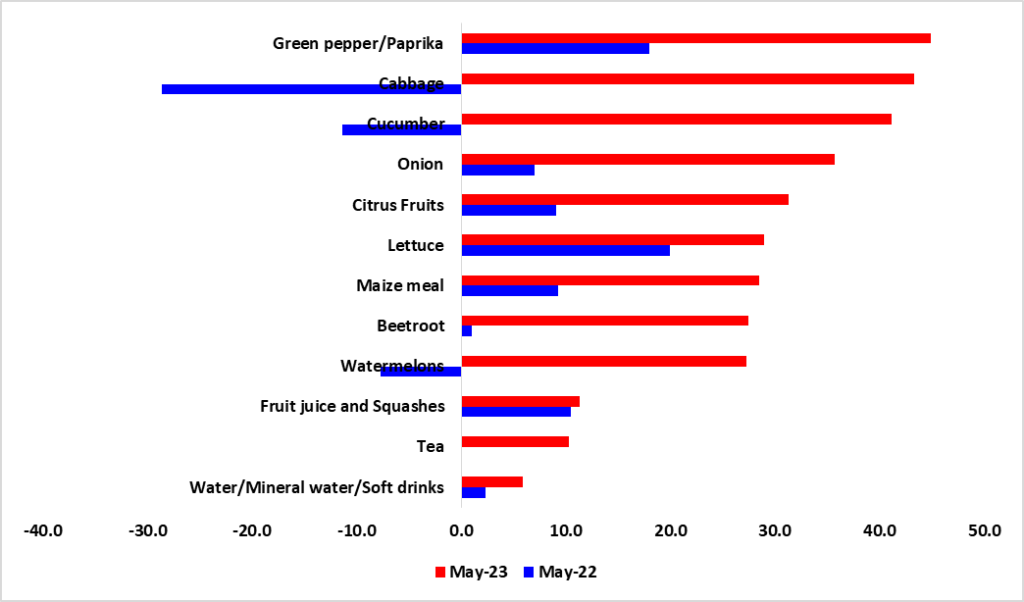Executive Summary
- In May 2023, the annual inflation rate rose to 6.3% from the 5.4% recorded in May 2022 and from the 6.1% recorded the prior month. (Figure 1)
- The categories of food and non-alcoholic beverages (12.5%), recreation and culture (9.9%), miscellaneous goods and services (7.7%), and alcoholic beverages and tobacco (7.5%) saw the biggest changes in the annual inflation rate. (Figure 2)
- Namibia recorded an inflation rate of 0.2% on a monthly basis in May 2023 compared to 0.4% in April 2023
Analysis
- The NCPI basket, which includes 16.5% of food and non-alcoholic beverages, had year-over-year inflation of 12.5% during the review period as opposed to 6.6% during the same period in 2022. This emanated from an increase in the demand for green pepper, cabbage, cucumber, and hot beverages such as tea due to the winter season (figure 3)
- The annual inflation rate for recreation and culture rose from 4.3% to 9.9%. This was caused by a 99.2% increase in package vacations as a result of a boost in tourism activities
- For miscellaneous goods and services, the annual inflation rate rose from 0.5% to 7.7%. This occurred due to the demand for insurance services
- The category for alcoholic beverages and tobacco increased from 4.7% during the same time last year to 7.5% this year. This was primarily impacted by the 8.4% increase in the cost of alcoholic beverages, especially white spirits
Figure 1: Annual Inflation Rate Namibia, (May 2022 – May 2023)

Source: NSA & HEI Research
Figure 2: Sub-Categorical analysis (%) change Year on Year(y-o-y) and Month on Month(m-o-m)

Source: NSA & HEI Research
Figure 3: Annual inflation rate for food and non-alcoholic beverages per subgroup, (May 2022 – May 2023)

Source: NSA & HEI Research
Outlook
We anticipate that inflation will continue to be higher for longer as a result of South Africa’s subdued economic outlook, which is primarily caused by the energy crisis, transportation bottlenecks, and the local currency hovering at an all-time low as a result of recent diplomatic tensions. This is because a significant portion of Namibia’s imports, specifically food, which is the primary driver of the annual inflation, is imported from South Africa.